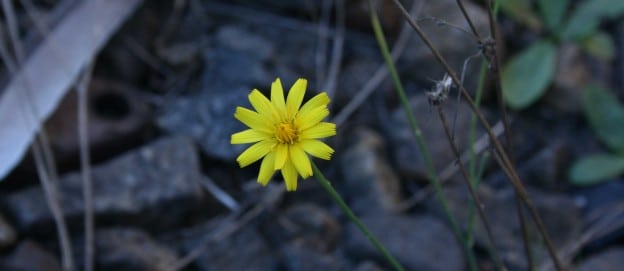Keeping Coal Relevant: University of Wyoming Leads the Way

To say the coal industry faces challenges is an understatement. Coal-fired power plants are being retired around the globe as efforts to decarbonize the world's power supply have intensified due to climate change concerns. That's a problem for people working in the coal industry, as well as for states and governments that rely on coal revenue to fuel their economies.
Wyoming is one of those states. According to the U.S. Energy Information Administration, Wyoming produced more than 239 million tons of coal in 2021. That's more than three times the amount produced in West Virginia, the second-largest coal producing state in the U.S.
Wyoming is the energy state," Scott Quillinan, senior director of research for the School of Energy Resources at the University of Wyoming, said as a guest on The POWER Podcast. Our mission here at the School of Energy Resources is energy-driven economic development for the state of Wyoming. ... We support the energy industry here through academic programs, research programs, and outreach and engagement."
Quillinan noted that about 90% of the energy extracted within Wyoming is exported from the state. Leaders would obviously like to maintain as much of that business as possible, which means research and development on technology designed to keep coal-fired power plants operating is important. That's one reason why the university has a keen focus on helping advance innovative carbon capture technology.
One project the School of Energy Resources is involved in is the Wyoming Integrated Test Center (ITC) located at Basin Electric Power Cooperative's Dry Fork Station, about seven miles north of Gillette. The ITC is a public-private partnership that brings together government, industry, and cooperatives with the shared goal of developing commercially viable uses for CO2 emissions from power plants. Basin Electric, along with co-owner Wyoming Municipal Power Co., provided the site for the ITC, along with significant in-kind contributions for the design, engineering, and construction of the facility. Tri-State Generation and Transmission Association committed $5 million to match Wyoming's $15 million commitment. The National Rural Electric Cooperatives Association provided an addition $1 million in support as well. A steel duct connects the Dry Fork plant's gas flue to the ITC. This gives researchers access to scrubbed flue gas otherwise released from the plant, which is largely a combination of ambient air, water vapor, and 12.5% carbon dioxide.
They have five small test bays and one large test bay," Quillinan explained. There you can test some things like amine capture. You can test membrane capture. You can test things like using carbon dioxide to make cement or to make other products," he said.
Next to the ITC is a project called the Wyoming CarbonSAFE, which stands for Carbon Storage Assurance Facility Enterprise. It is one of 13 original carbon capture, utilization, and storage (CCUS) project sites in the U.S. funded by the Department of Energy with the ultimate goal of ensuring carbon storage complexes will be ready for integrated CCUS system deployment.
Wyoming CarbonSAFE is looking at the commercial feasibility of carbon storage directly below Dry Fork station," said Quillinan. This project is looking at storing at least 2 million tons of CO2 per year in a stack storage complex directly below this facility. And that project is run out of our office here at the School of Energy Resources. So, eventually, all said and done, we'll have the newest, cleanest coal-fired power plant in the United States, a research and development center looking at carbon capture and utilization, and a field laboratory looking at carbon storage. So, it's really, really neat how it's all coming together."
The school is also focused on diversifying the state's coal-based economy. It's doing that by developing novel and marketable products derived from coal. We like to take a piece of coal, break it all the way down to its different components, and build it back up into some value-added product," Quillinan explained. Some examples include agricultural soil amendments, asphalt and paving materials, and roofing and construction materials including coal-based bricks.
Today on campus, we're currently building a demonstration house completely out of coal-based bricks," said Quillinan. Right next door to it, we're building a demonstration house out of conventional materials so that we can test the performance from one house to the other-things like toxicity, fire performance, sound absorption, heat absorption. So, it's a really neat program."
In addition to the carbon capture and storage, and carbon engineering product programs, the third pillar of the university's carbon-based research involves rare earth elements and critical mineral extractions from coal seams. It turns out the Powder River Basin coal seams have elevated concentrations of rare earth elements, and in some cases, that elevated concentration lies in the two to three feet of overburden directly above or below some of the coal seams," Quillinan explained.
Rare earth elements and critical minerals are used in many electronics components, non-reflective glass, batteries, and renewable energy technologies, among other things. About 90% of rare earth elements and critical minerals used today are mined overseas, many of them in China. With the current state of world affairs, having domestic supplies for these vital materials could be important to national security.
We're pretty excited about this program and what it can do to bring some of that market back domestically, but to Wyoming specifically," Quillinan said.
To hear the full interview, which includes more about work the University of Wyoming is doing to help the coal industry become more sustainable, listen to The POWER Podcast. Click on the SoundCloud player below to listen in your browser now or use the following links to reach the show page on your favorite podcast platform:
The POWER Podcast 116. Keeping Coal Relevant: University of Wyoming Leads the WayFor more power podcasts, visit The POWER Podcast archives.
-Aaron Larson is POWER's executive editor (@AaronL_Power, @POWERmagazine).
The post Keeping Coal Relevant: University of Wyoming Leads the Way appeared first on POWER Magazine.